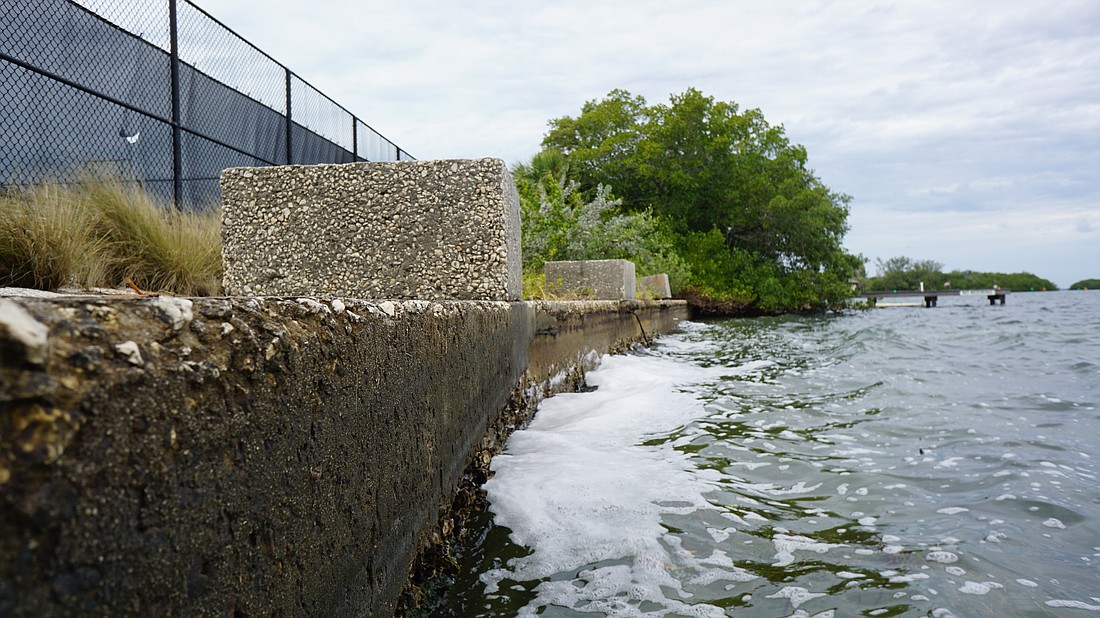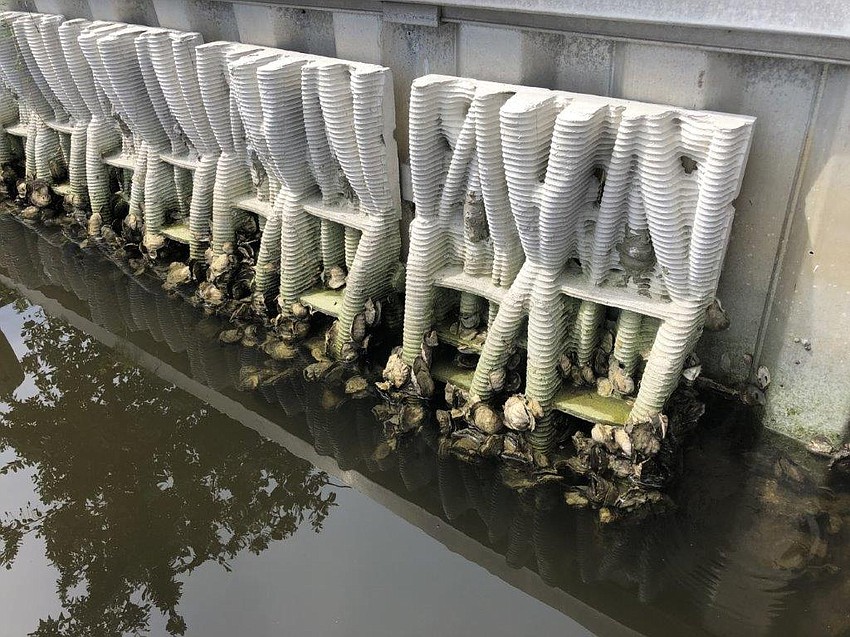- July 26, 2024
-
-
Loading

Loading

Longboat Key’s Bayfront Park shoreline will soon undergo projects designed to improve marine habitat and reduce eroison.
Sarasota Bay Estuary Program’s fiscal year 2024 projects as a part of its funding from the Bipartisan Infrastructure Law include two seawall-altering projects for Bayfront Park.
The Bipartisan Infrastructure Law, according to the White House, invests in the country’s infrastructure and environmental initiatives, and identifies the National Estuary Program as a key partner.
The deal provides $132 million to the 28 National Estuary Programs from fiscal year 2022 through fiscal year 2026. The programs receive $900,000 per year.
From its share of money from the Bipartisan Infrastructure Law, the Sarasota Bay Estuary Program has allocated $2.7 million toward restoration projects for fiscal year 2024 through 2026. This year, $500,000 of the $900,000 is going toward the “Longboat Key Bayfront Park Shoreline” project.
SBEP Program Scientist Jay Leverone said the organization is still waiting for the funding to come through, but once it does, then permitting and contracting can begin the process.
Much of Sarasota Bay is lined with seawalls. The main issue this project will attempt to mitigate is the unintended consequences of newer vinyl seawalls.
Traditionally, seawalls were built with concrete. But when seawalls are replaced or built anew, they have been increasingly been made of vinyl, Leverone said.
“This is an irreversible trend to convert seawalls ultimately from concrete to vinyl,” Leverone said. “No big deal for the most part. But we have discovered that — we don’t know exactly why — vinyl seawalls do not support the same oyster habitat.”
Vinyl seawalls have become increasingly popular, Leverone said, because they are cheaper and easier to install as opposed to concrete.
“If you look at it as a trend over the next decade or so, we will be losing a significant part of our oyster population simply due to the replacement of concrete seawalls (with) vinyl seawalls,” Leverone said.
The texture of concrete allows oysters to attach and grow on the surface. Oysters are important ecosystem filter feeders. These organisms filter the water and improve the bay's water quality. A single adult oyster could filter more than 50 gallons of water a day, according to the National Oceanic and Atmospheric Administration.
The projects likely commencing in 2024 will change Bayfront Park’s seawall shoreline, which is currently a mix of concrete and vinyl.
About 250 feet of the park’s vinyl seawall will be used for SBEP to test a technology that has been used in other parts of the state: mangrove reef panels.
The panels are made of marine-grade concrete and are designed to look like red mangrove prop roots, according to Leverone.
Leverone found these panels when he discovered the creator Keith Van de Riet. Van de Riet is a professor at the University of Kansas and has been testing these panels.

Not only does the material of the panels allow for the recruitment of oysters and other invertebrates, but they also have an aesthetic component in the way they mimic mangroves.
This is the first aspect that will be prioritized once the money from the Bipartisan Infrastructure Law becomes available, said Leverone.
Next will be a living shoreline project along the northern 50 feet of the park.
Living shorelines are a trend that has become increasingly popular in the last 10 years, according to Leverone.
“It’s a big movement sweeping the nation,” he said.
According to NOAA, there are many benefits of living shorelines, including: protecting shorelines from erosion, providing habitat, increasing stability and storm protection.
“Basically they try to mimic natural shorelines,” Leverone said. “It’s a combination of structural material and living materials to try and mimic and stabilize it as a more natural shoreline.”
The concrete seawall at Bayfront Park is aging and is a good fit for the type of living shoreline he’s been looking into, he said.
Leverone discovered International Subsea Services, LLC, a company based in Pinellas County. The company works on lake, pond and wetland maintenance and restoration projects.

What piqued Leverone’s interest was the company’s “ShoreSOX” technology for living shorelines. With it, the caps of Bayfront Park’s old seawall would need to be demolished before the whole seawall face would be covered with a mesh material.
Over time, the mesh material grows into a natural, sloped structure. This type of living shoreline adds natural aspects to the area, changing the habitat and allowing for the growth of more vegetation and marine life.
Leverone said he and the team at SBEP still aren’t sure when the funds will become available from the Bipartisan Infrastructure Law, but that they are set to get started when the money does come through.